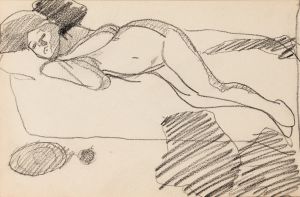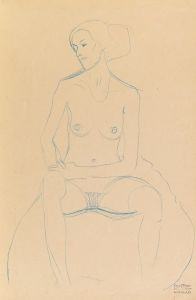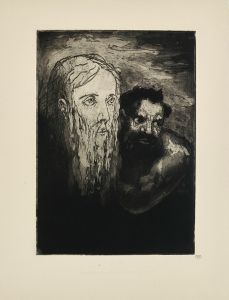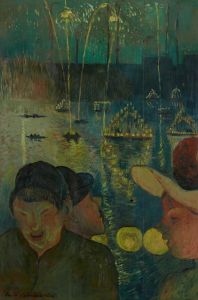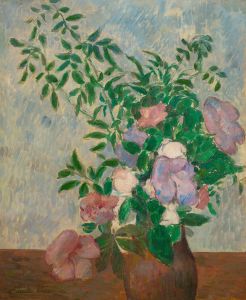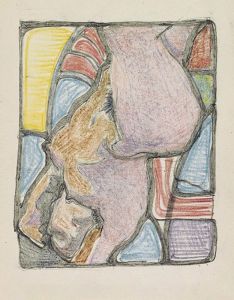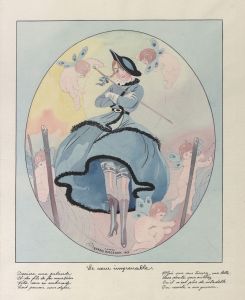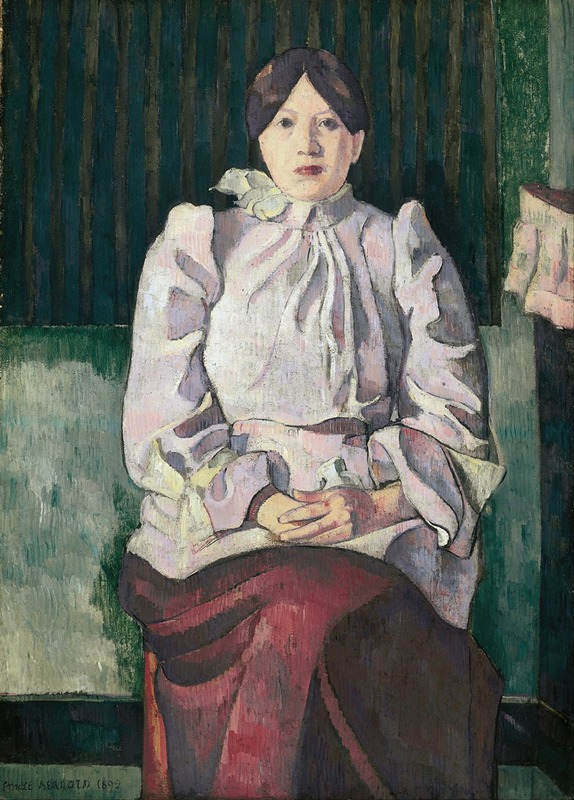
Portrait of Marie Lemasson
A hand-painted replica of Emile Bernard’s masterpiece Portrait of Marie Lemasson, meticulously crafted by professional artists to capture the true essence of the original. Each piece is created with museum-quality canvas and rare mineral pigments, carefully painted by experienced artists with delicate brushstrokes and rich, layered colors to perfectly recreate the texture of the original artwork. Unlike machine-printed reproductions, this hand-painted version brings the painting to life, infused with the artist’s emotions and skill in every stroke. Whether for personal collection or home decoration, it instantly elevates the artistic atmosphere of any space.
Émile Bernard was a French Post-Impressionist painter and writer, known for his significant contributions to the Symbolist movement and his close associations with other prominent artists of his time, such as Vincent van Gogh, Paul Gauguin, and Henri de Toulouse-Lautrec. One of his notable works is the "Portrait of Marie Lemasson," which exemplifies his unique style and artistic vision.
The "Portrait of Marie Lemasson" is a testament to Bernard's skill in capturing the essence of his subjects through a blend of realism and symbolism. Although specific details about the painting's creation, such as the exact date or the context of its commission, are not widely documented, the artwork is recognized for its distinctive approach to portraiture. Bernard's technique often involved bold outlines and flat areas of color, a style that was influenced by his interest in cloisonnism—a method characterized by separating colors with dark contours, reminiscent of stained glass.
Marie Lemasson, the subject of the portrait, is depicted with a serene and contemplative expression, which is a hallmark of Bernard's ability to convey depth and emotion. The use of color in the portrait is particularly noteworthy; Bernard employs a palette that enhances the mood of the piece, using subtle contrasts to draw attention to the subject's features. The background and attire of Marie Lemasson are rendered with simplicity, allowing the viewer to focus on her expression and the overall composition.
Bernard's work during this period was heavily influenced by his interactions with other avant-garde artists. His friendship with Paul Gauguin, in particular, played a crucial role in the development of his style. The two artists exchanged ideas and techniques, which is evident in Bernard's use of symbolic elements and his departure from traditional representational art. This collaboration and exchange of ideas were pivotal in the evolution of Post-Impressionism and the broader Symbolist movement.
The "Portrait of Marie Lemasson" is an example of Bernard's exploration of themes beyond mere representation. His portraits often delve into the psychological and spiritual dimensions of his subjects, reflecting his interest in the inner life and the symbolic potential of art. This approach aligns with the broader Symbolist movement, which sought to express the unseen and the emotional through visual means.
While the "Portrait of Marie Lemasson" may not be as widely recognized as some of Bernard's other works, it remains an important piece within his oeuvre. It showcases his ability to blend traditional portraiture with innovative techniques and ideas, contributing to the rich tapestry of late 19th-century art. Bernard's legacy as a pioneer of Symbolism and a key figure in the transition from Impressionism to more abstract forms of expression is encapsulated in works like this portrait, which continue to be studied and appreciated for their artistic and historical significance.





